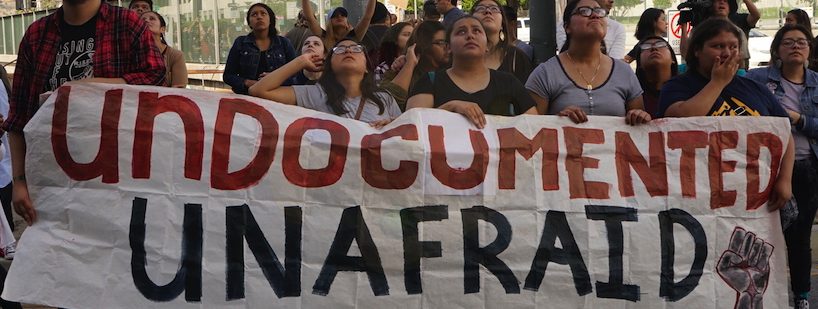Introduction
For undocumented students, higher education is cost prohibitive though actions toward access have been taken at the national, statewide, and university-wide levels. A 2014 journal article by David Nguyen and Gabriel Serna, titled “Access or Barrier? Tuition and Fee Legislation for Undocumented Students across the States,” compares national historical precedent and statewide actions. A 2016 journal article by Andrew Thangasamy and Deborah Horan, titled “Lowering the Cost Barrier to Higher Education for Undocumented Students: A Promising University-level Intervention,” builds on the Nguyen and Serna contextual piece with an example of how the Metropolitan State University of Denver (MSU Denver) took specific action to decrease barriers to higher education for undocumented students.
National Context
A major case in the fight for education of undocumented children was the 1982 Plyer vs. Doe U.S. Supreme Court case which guaranteed primary and secondary education for undocumented children. This case, along with Brown vs. the Board of Education and a handful of others marked important steps toward equal opportunity in education and Supreme Court inclusion of undocumented immigrants in the Equal Protection Clause of the Fourteenth Amendment of the Constitution (Nguyen & Serna, 2014).
The last major immigration reform, more than thirty years ago, was the Immigration Reform and Control Act of 1986 which made it illegal to hire undocumented immigrants and “legalized” millions of undocumented immigrants. Additional acts ten years later impacted undocumented immigrants’ access to social welfare and health benefits while also denying education benefits (Nguyen & Serna, 2014).
More recently, the U.S. Congress has debated the proposal of the Development, Relief, and Education for Alien Minors (DREAM) Act for years. This comprehensive proposal would provide a path to legalization for undocumented young people though it would not directly lower the cost of higher education (Thangasamy & Horan, 2016).
Statewide Actions
With a lack of national action to support undocumented students’ access to higher education, many states have taken steps to reduce cost barriers. The first state to offer in-state tuition for undocumented students was California in 2001, followed by more than a dozen others (Nguyen & Serna, 2014). In 2013, Colorado passed the ASSET Bill allowing access to Colorado public universities for undocumented students (Thangasamy & Horan, 2016). The significant impact on students’ access to education is evident in a 2008 study that found a 31% increase in college enrollment of noncitizen Mexicans in the U.S. when a tuition subsidy was available (Thangasamy & Horan, 2016).
Some states, however, have taken actions since the mid-2000s that either explicitly or effectively banned in-state tuition for undocumented students. These states are ultimately hurt by these actions because they lose large numbers of otherwise skilled, educated people to more welcoming states (Nguyen & Serna, 2014).
University-level Solutions
In some cases, where states have not acted to increase higher education access, universities have taken action. Before Colorado’s statewide measures in 2013, MSU Denver offered lower tuition to undocumented students in 2012. Following a suggestion by the university president, the MSU Denver Board of Trustees enacted the lowered tuition. This was possible due to a favorable governor and state legislature, as opposition would have resulted in the loss of state funding to the public university (Thangasamy & Horan, 2016).
